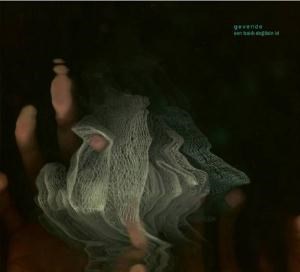
BY HASAN MURAT SÜMER (EE/IV)
hasan.sumer@ug.bilkent.edu.tr
The English have dominated the rock music genre since the sixties; a very large percentage of the most memorable and influential rock musicians of the second half of twentieth century were English. The case is pretty much the same if we restrict the scope to progressive rock. The Swedes have also been very successful, and the Italians creative enough for “Italian Progressive Rock” to be designated a separate subgenre, but almost all of the giants of prog are from England. Of course, this domination is mostly based on how many of their musicians are recognized worldwide; in truth, every nation has its big guns, such as Turkey’s Barış Manço and Moğollar. Let’s see what our country has to offer in progressive music apart from these obvious folk masters.
Musea is a nonprofit French record label dedicated to progressive rock, and Asia Minor is a band on the label. Half of the members are French, but the two frontmen, the vocalist/guitarist and the flautist, are Turkish. The band has two studio releases, “Crossing the Line” (1979) and “Between Flesh and Divine” (1980). I think that without the band Camel, Asia Minor might have never existed. Their music is rooted deep in the Camel sound, but the surface is innovatively decorated with the band’s own ideas. Their debut album is pretty good, but the follow-up is at the masterpiece level. The somewhat raspy vocals are in English most of the time, with a clearly Turkish accent. The flute playing is the strongest aspect of Asia Minor’s music; it’s sometimes a little aggressive and feels improvised, but most of the time, it has a strong classical style. I recommend the track “Lost in a Dream Yell” from the later album. This song, which reflects its title very well, is divided into two parts. The first part, with a constant sound of rain in the background, consists of vocals and spacey keyboard and guitar sounds. It’s nice, but when the vocals and the rain stop, the drums gain some speed and the scene is given over to an amazing, four-minute-long flute solo. It’s dreamy, melancholic and brave: one of the most satisfying flute parts I’ve ever heard.
 On the psychedelic front, there are Siddhartha and Nemrud. I’ve discussed Siddhartha before, so let’s focus on Nemrud. They’re also a band on the Musea label, but they’re still active, and this time, all of the musicians are Turkish. Their music is heavily influenced by the bands Eloy and Pink Floyd, with the former being more dominant. The concepts their music revolves around are given away by the names of their studio releases: “Journey of the Shaman” (2010) and “Ritual” (2013). Ritual is generally liked better, but I think otherwise. “Journey of the Shaman” has only the huge title song, divided into three parts; it’s one of those love-it-or-hate-it albums. Here, we listen to the story of a shaman named Mitos as he first travels from the steppes of Central Asia to the underground (where the dead cross to the other side), and then to the sky to finalize his spiritual journey. The guitar is the dominant instrument throughout; its passages are innovative without much complexity, and it’s responsible for creating dreamy, relaxed or violent moods. The vocals have a soft timbre and are, again, in English with a clear Turkish accent (not as clear as Asia Minor’s, though). “Ritual” is also a concept album about an individual’s enlightenment. The style is similar to that of the previous release. However, the musicians are more easygoing and melancholic and less experimental this time, so “Ritual” is more accessible than “Journey of the Shaman.” I recommend that you start with “Ritual” if you’re going to give Nemrud a chance.
On the psychedelic front, there are Siddhartha and Nemrud. I’ve discussed Siddhartha before, so let’s focus on Nemrud. They’re also a band on the Musea label, but they’re still active, and this time, all of the musicians are Turkish. Their music is heavily influenced by the bands Eloy and Pink Floyd, with the former being more dominant. The concepts their music revolves around are given away by the names of their studio releases: “Journey of the Shaman” (2010) and “Ritual” (2013). Ritual is generally liked better, but I think otherwise. “Journey of the Shaman” has only the huge title song, divided into three parts; it’s one of those love-it-or-hate-it albums. Here, we listen to the story of a shaman named Mitos as he first travels from the steppes of Central Asia to the underground (where the dead cross to the other side), and then to the sky to finalize his spiritual journey. The guitar is the dominant instrument throughout; its passages are innovative without much complexity, and it’s responsible for creating dreamy, relaxed or violent moods. The vocals have a soft timbre and are, again, in English with a clear Turkish accent (not as clear as Asia Minor’s, though). “Ritual” is also a concept album about an individual’s enlightenment. The style is similar to that of the previous release. However, the musicians are more easygoing and melancholic and less experimental this time, so “Ritual” is more accessible than “Journey of the Shaman.” I recommend that you start with “Ritual” if you’re going to give Nemrud a chance.
Gevende is the band that inspired me to write this column. Their sound is more original, with some traces of third-generation King Crimson. Their choice of instruments is unusual. Accompanying the standard lead guitar, bass and drums, they use the trumpet and the viola, and use them a lot. In 2006, they released “Ev,” which is a highly experimental work. It’s a mix of psychedelic sound, jazzy orchestral sound, Turkish folk and a little Turkish classical music, with some Spanish touches. The vocals are very tasteful, and every instrument lives up to its name. Overall it’s a really good work, but I couldn’t help noticing that some of the songs are very messy and a little pretentious. Well, they fixed that problem in their 2011 release, “Sen Balık Değilsin Ki.” This album is on a completely different level when compared to other Turkish music of the past decade. It exceeds an hour in length, and all of the tracks are unbelievably beautiful in their own right. Most of them have buildups in the middle and epic payoffs at the end; I just love this structure in music. I especially recommend the song “Akvaryum,” which has incredible emotional power and, thanks to its relative simplicity, is capable of conquering anyone’s heart.
